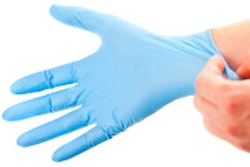The California Dental Hygienists' Association (CDHA) has issued a list of simple ways patients and oral health professionals and their patients can prevent catching and spreading the disease.
"It's critical that the public sees the link between oral health and flu prevention because the H1N1 virus spreads through the respiratory system and mouth," said CDHA President Daphne Von Essen. "The primary infection control goal is to prevent transmission of disease -- that begins with the mouth."
Most people may not realize how important it is to avoid sharing toothbrushes or allowing them to have contact with one another in the bathroom, she said.
"This is especially true if a family member contracts the flu," said Von Essen. "We recommend people throw out their old toothbrushes and get new ones if they are either sick or getting over the flu."
For dental hygienists, assistants and dentists, the CDHA recommends the following infection control measures during patient assessment:
--Patients with an acute respiratory illness should be sent home or placed in a single-patient room with the door kept closed.
--Offer a disposable surgical mask to persons who are coughing or provide tissues and a no-touch receptacle for disposal of used tissues.
--The ill person should wear a surgical mask when outside of the patient room.
--Dental Healthcare Personnel assessing a patient with influenza-like illness should wear a disposable surgical facemask, non-sterile gloves, gown, and eye protection to prevent direct skin and conjunctival exposure.
--Patient and dental healthcare workers should perform hand hygiene (e.g., hand washing with non-antimicrobial soap and water, alcohol-based hand rub, or antiseptic hand wash) before and after having contact with respiratory secretions and contaminated objects/materials.
"This is a serious flu, but with proper steps and education, dental healthcare professionals and their patients can help prevent the spread of H1N1," said Von Essen.



















